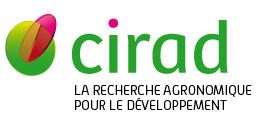Genetic and genomic diversity response of rubber tree to a major fungal disease
Le Guen V., Koop D.M., Salgado L.R., Dûˋon M., Doare F., Souza L.M., Seguin M., Berger A., Pujade-Renaud V., Garcia D.. 2015. IguaûÏu Falls : ISPMB, 7 p.. International Congress of Plant Molecular Biology. 11, 2015-10-25/2015-10-30, IguaûÏu Falls (Brûˋsil).
The domestication history of rubber tree (Hevea brasiliensis) is very recent and was characterized by a severe bottle-neck when introduced from South America to Asia more than a century ago. This event might have greatly influenced the structure of genome and gene diversity of the species, and reflects, among other traits, in the capacity to cope with a major foliar disease. South American Leaf Blight (SALB) is a fungal disease caused by the Ascomycota Microcyclus ulei that is until now limited to the South American continent where it hampers the expansion of rubber cultivation. There is no known evidence of any source of tolerance or resistance to this disease among Asiatic rubber cultivars. Conversely, many resistance mechanisms were found among Brazilian or Peruvian accessions. Their characterization was primarily undertaken by QTL analysis within progenies of four resistant genotypes crossed with susceptible Asiatic clones. These studies allowed to differentiating various genetic loci responsible for resistance mechanisms. A more in depth analysis was undertaken for two of these resistant cultivars (MDF 180 and FX3899) by sequencing and annotation of cDNA libraries obtained after artificial inoculation by the fungus. The identification of numerous candidate genes differentially regulated during the infection process in both cultivars suggested a general scheme for major mechanisms implied in reaction to an infestation by M. ulei. Another study on NGS transcriptomic data showed also that few genes are shared at interspecific level within the genus Hevea, in response to SALB inoculation.
Documents associûˋs
Communication de congrû´s
Agents Cirad, auteurs de cette publication :
- Berger Angûˋlique — Bios / UMR AGAP
- Doare Fabien — Bios / UMR PHIM
- Garcia Dominique — Bios / UMR AGAP
- Le Guen Vincent — Bios / UMR AGAP
- Pujade-Renaud Valûˋrie — Bios / UMR AGAP
- Seguin Marc — Bios / UMR PVBMT
